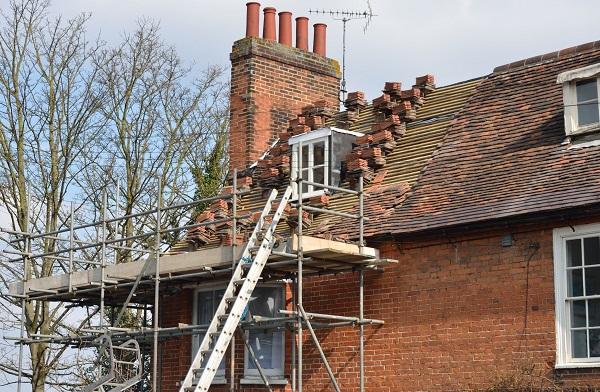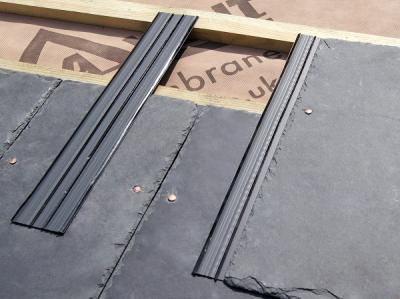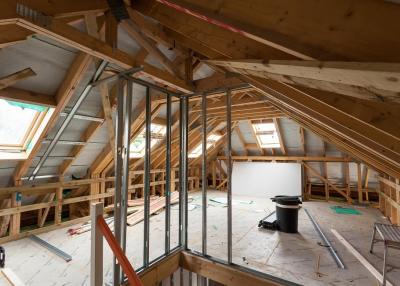Insulating pitched roofs at rafter level
Where more than 50% of the surface of an existing roof is re-covered, a Building Regulations application must be made - and the Regs require the roof to be insulated as part of the work. Where there’s an existing room in the roof, insulating at rafter level can be tricky - you risk creating condensation, which can lead to mould and eventually damage to the building fabric.
Where you position the insulation is equally important. At rafter level, you’ll need to raise the roof line by adding insulating sarking boards and counter battens. But this brings visual and technical problems which are not just limited to historic and listed buildings. If you’re working on social housing or semi-detached properties, raising the roofline may not be an option.
But did you know some insulating breather membranes can allow you to upgrade insulation and manage condensation without raising the roofline? And you can achieve this without disturbing the occupants or messing up their interior too.
Points to consider
- Rafter depth may limit the insulation that can be installed between them and it may not be practical or possible to put additional insulation on the underside – speak to your LABC surveyor.
- Where rafters are shallow (less than 75mm) a limited depth of insulation can be accommodated. If a lath and plaster ceiling also exists then forcing it into the rafter space may damage the ceiling below.
- The ability of breather membranes to remove moisture from the roof structure depends on the vapour resistance of the ceiling. As most existing ceilings do not feature a vapour control layer, the structure should be checked to determine whether a ventilated void is required. Lath and plaster ceilings, or those with unsealed penetrations will usually require a different solution with a ventilated air void above the insulation.
- Flexible insulating breather membranes are easier to install compared to rigid insulation, which requires careful jointing and sealing of the gaps to achieve effective insulation.
- Where 50% of the roof is being refurbished, you need to upgrade the insulation too and as insulating breather membranes are quick and easy to install - you can leave a roof watertight in a day.
Air-open membranes such as the LABC-Registered PhotonAir are the most breathable insulating breather membranes as they allow more water vapour to pass than air-closed options. Crucially, PhotonAir doesn’t need counter battening - you can simply drape it over the rafters just as you would a conventional breather membrane. This means you don’t need to raise the roof.
Further information on LABC Registered Details
LABC Registered Details, now known as LABC Assured (as of March 2019), is a fast track approval for products and systems that gives building regulation acceptance by all local authority building control teams in England & Wales - a ‘Willy Wonka’ golden ticket if you like! This can be for a single product such as a damp proof course through to a full new offsite modular building.
Please Note: Every care was taken to ensure the information was correct at the time of publication. Any written guidance provided does not replace the user’s professional judgement. It is the responsibility of the dutyholder or person carrying out the work to ensure compliance with relevant building regulations or applicable technical standards.
Sign up to the building bulletin newsletter
Over 48,000 construction professionals have already signed up for the LABC Building Bulletin.
Join them and receive useful tips, practical technical information and industry news by email once every 6 weeks.
Subscribe to the Building Bulletin




Comments
Add new comment